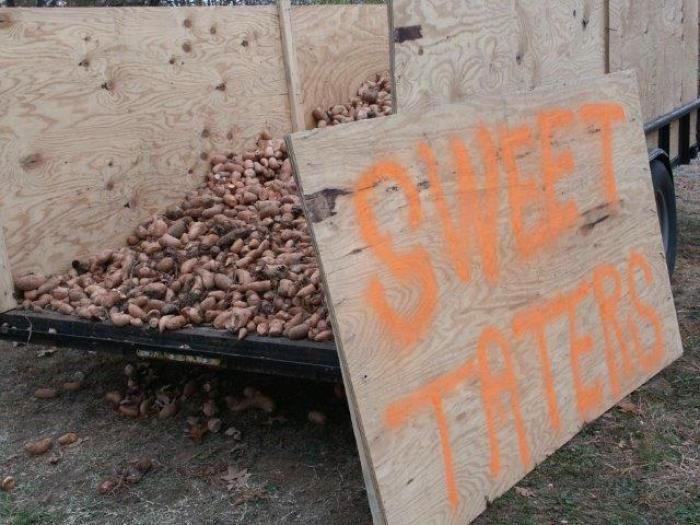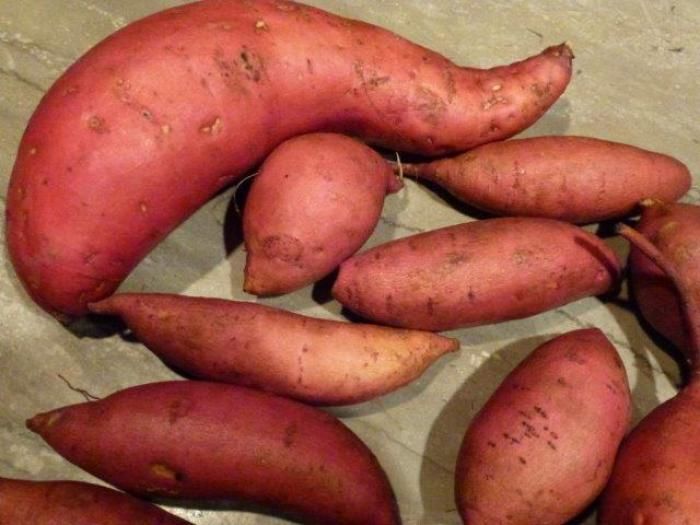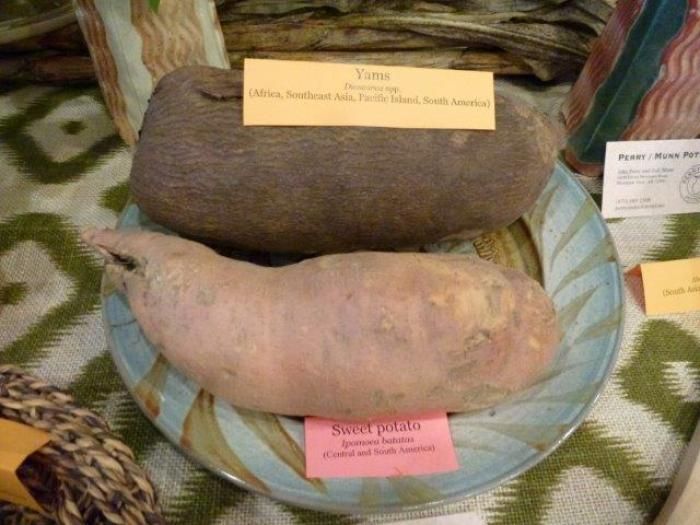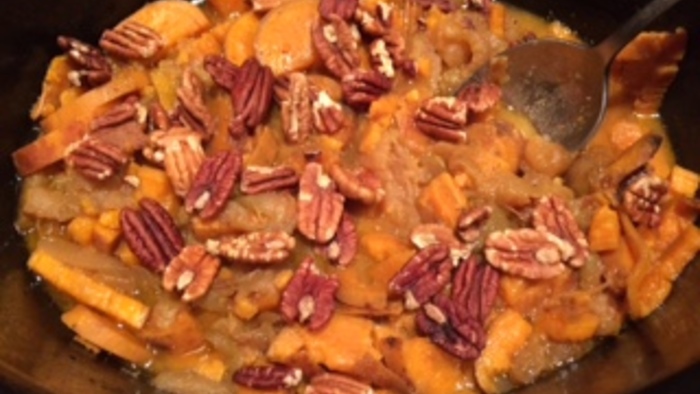
It’s that time of year again–most gardeners harvest sweet potatoes before a frost–so right now sweet potatoes are piled high on roadside stands, at farmers’ markets and in the grocery store. We are seeing them everywhere since they are a popular menu item for the Thanksgiving feast. If you don’t grow them, buy them in bulk and see how to store them below.
If you grow your own, once dug, clean the dirt from the potatoes and spread them out in a cool place with good air circulation (optimum temp about 80 degrees F) for about one week to cure. (Of course, you can eat them, the day you dig them and they will still be delicious.) Once cured, store them in boxes or baskets in a coldroom. According to the North Carolina Sweet Potato Web site: “Most roots are cured immediately after harvest to improve flavor and storage life. Curing heals cuts and reduces decay and shrinkage in storage because it allows the periderm to thicken and to reform. Curing also converts some starches to sugars, enhancing flavor.” Once cured the potatoes, if kept at temperatures between 55 and 60 degrees F, will keep for up to a year, without much shrinkage. For everything you want to know about sweet potatoes, check out https://www.ncsweetpotatoes.com/sweet-potato-industry/growing-sweet-potatoes-in-north-carolina/curing-and-storing/
Sweet potatoes, affectionately referred to by some as “sweet patooties” (some people wager bets on the latter as in “you can bet your sweet patootie… “) and matter-of-factly called “sweet taters” by others, are also mistakenly called yams. Ipomoea batatas (sweet potatoes) come in a variety of sizes and shapes, and though generally orange-fleshed, they come in a range of colors from white and yellow to purple. The word yam derives from nyami, which they are called in their native Africa. Yams, (Dioscorea spp.) are large roots, with rough, scaly brown exteriors and white or cream-colored flesh. They are very starchy and have very little beta carotene, whereas the bright orange flesh of sweet potatoes reveals the presence of high amounts of this nutrient.
If the skins are left on, sweet potatoes are high in fiber and contain good amounts of vitamins A and C and manganese. They are antioxidant and have complex carbohydrates, which provide energy at a steady rate without raising blood sugar. Leave those skins on–they will actually lower the glycemic index level. An average-sized sweet potato is only 100 calories.
I love sweet patooties and enjoy them often in many forms. The simplest way is to bake them in the oven or roast them in a Dutch oven atop the woodstove. I use them in soups, stews and casseroles, butters and spreads, and in baked goods such as rolls, biscuits, puddings and pies. I actually like a sweet potato pie better than a pumpkin pie–try substituitng cooked, mashed sweet potato in place of pumpkin.
Here are a few recipes from past posts which I think you might enjoy: /item/10065/baked-sweet-potatoes-with-horseradish and /item/14385/peanut-and-sweet-potato-soup-with-coconut-milk
Here’s a link to one of my new favorite recipes: Savory, Oven-Roasted Sweet Potatoes /item/16437/savory-oven-roasted-sweet-potatoes
Hoping that you’ll include healthy and delicious sweet patooties in your upcoming holiday menu!
Fine Gardening Recommended Products

The New Organic Grower, 3rd Edition: A Master's Manual of Tools and Techniques for the Home and Market Gardener, 30th Anniversary Edition
Fine Gardening receives a commission for items purchased through links on this site, including Amazon Associates and other affiliate advertising programs.

A.M. Leonard Deluxe Soil Knife & Leather Sheath Combo
Fine Gardening receives a commission for items purchased through links on this site, including Amazon Associates and other affiliate advertising programs.

Plant Covers Freeze Protection 10 ft x 30 ft Floating Row Cover 0.9oz/yd²
Fine Gardening receives a commission for items purchased through links on this site, including Amazon Associates and other affiliate advertising programs.





















Comments
Log in or create an account to post a comment.
Sign up Log in